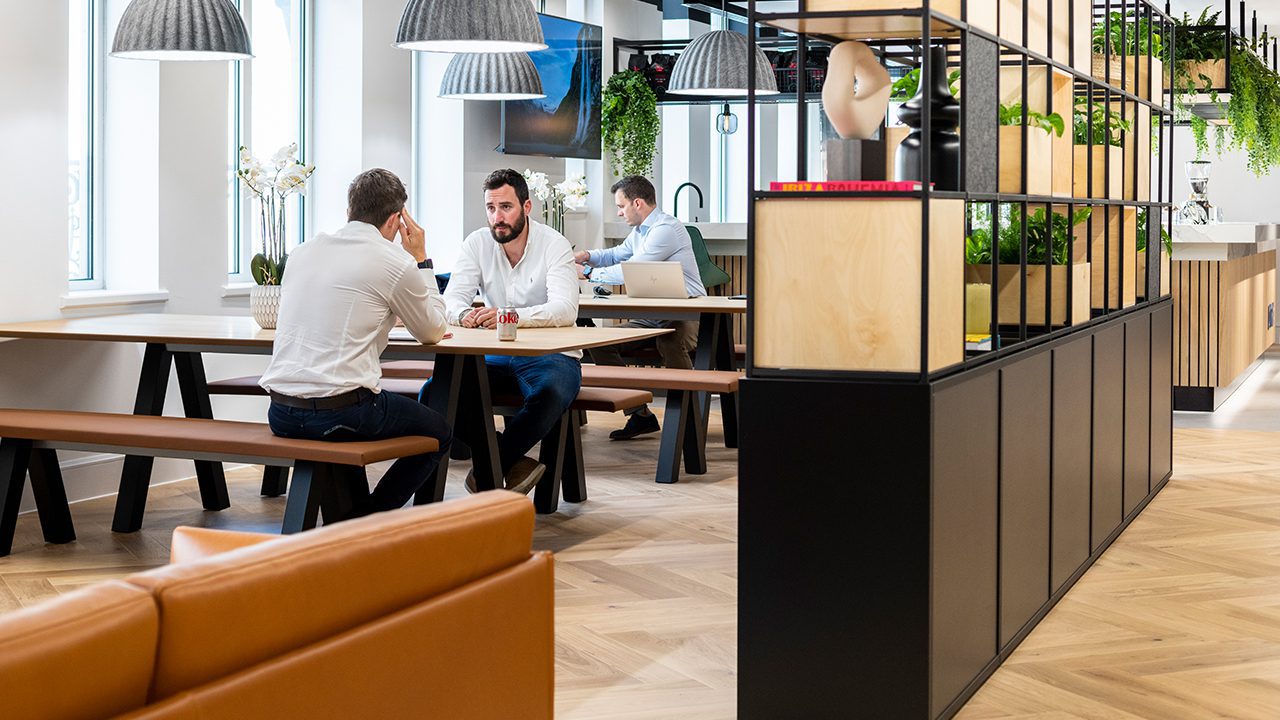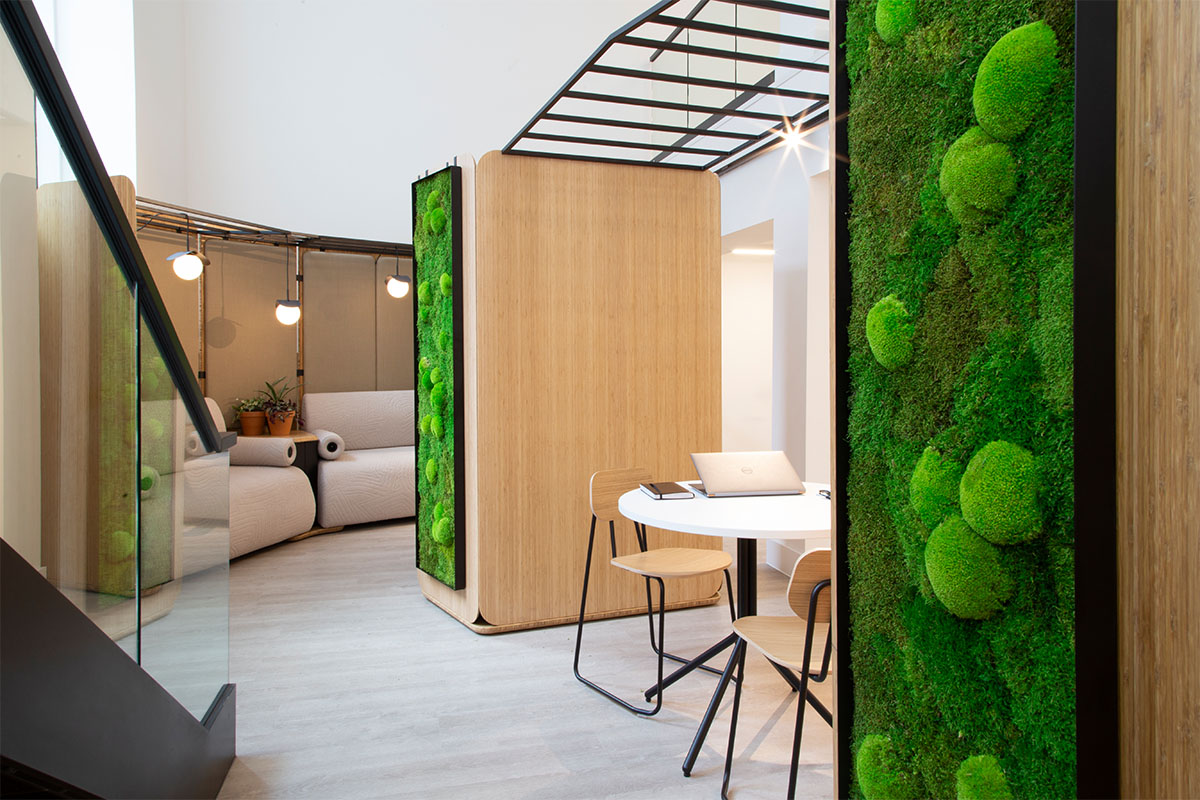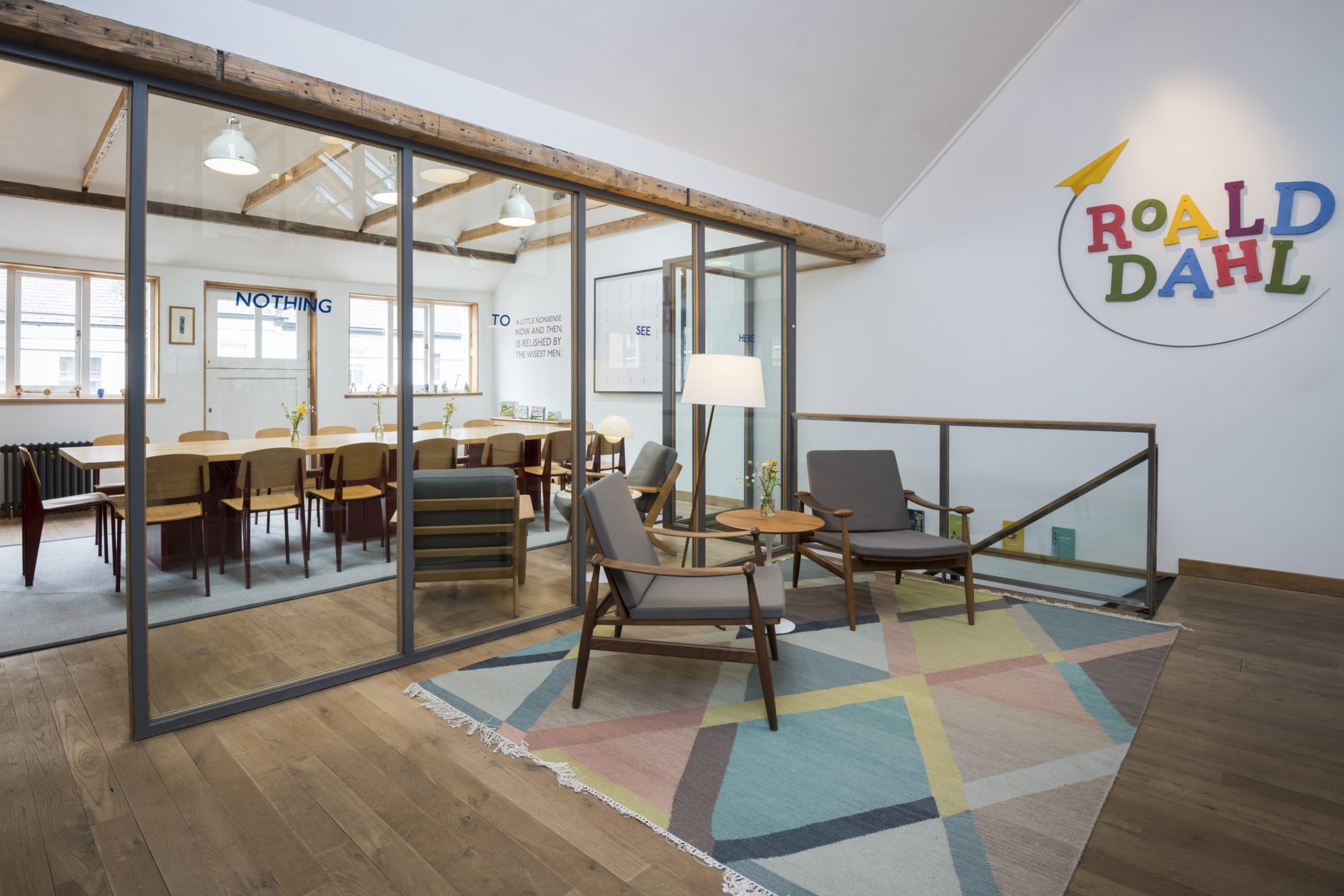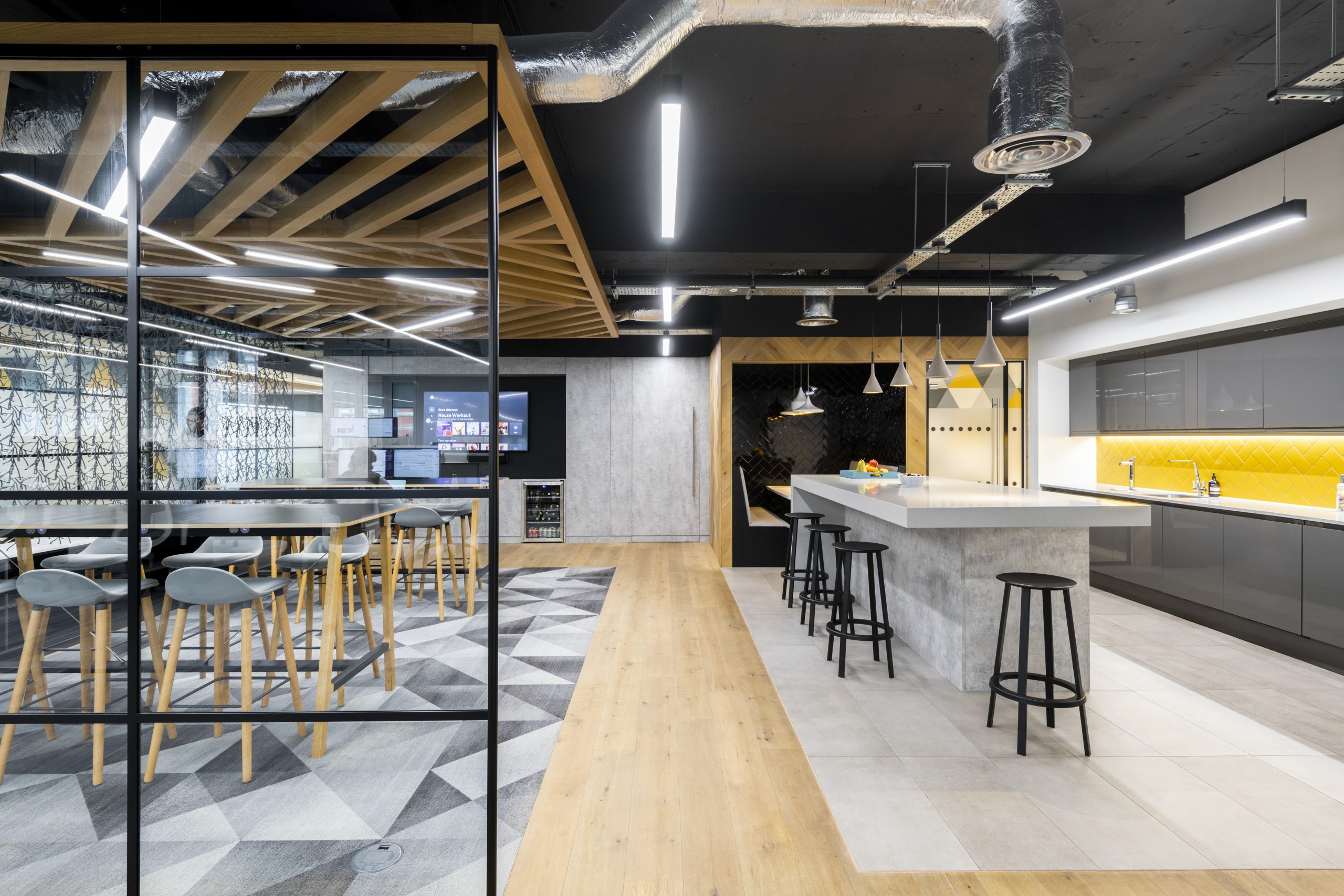
 1. What is Agile Working?
1. What is Agile Working?
Agile working is an innovative, flexible approach that redefines how work is accomplished. Rather than tying productivity to a specific location or rigid schedule, it emphasises outcomes and adapts to the unique needs of both the workforce and the business. In this sense, agile working can be seen as a natural progression from the historical evolution of office spaces—from the compartmentalised offices of early industrial design to the collaborative, multifunctional environments of today.
Historically, office design was heavily influenced by industrial needs and strict hierarchies, exemplified by the open-plan offices of the early 20th century and later, the cubicle farms of the 1980s. However, as our understanding of productivity, employee well-being, and creativity evolved, so too did the need for workspaces that could adapt to different working styles. Agile working represents this evolution by merging flexible work patterns with a design philosophy that supports collaboration and continuous improvement.
In practice, agile working involves rethinking the role of the physical workspace. It leverages modern technologies such as cloud computing, real-time communication tools, and digital collaboration platforms to create an environment where work is not confined to a desk or office. Instead, work becomes an activity that can be performed in a variety of settings, from traditional offices to home environments and even public spaces.
Agile working is a fundamental shift in how organisations approach work. It moves away from traditional, fixed office environments—a concept that has evolved significantly since the early days of office design—to a flexible, dynamic, and outcome-focused methodology. In this article, we explore the definition, benefits, challenges, and implementation strategies of agile working in modern organisational contexts while tying its evolution to the rich history of office design.
Just as office design has transformed over centuries—from the formal, compartmentalised spaces of ancient Rome and the regimented layouts inspired by Taylorism, to the open-plan and later, cubicle farm models—agile working too reflects the evolution of our workspaces. Today’s agile working is not only about flexibility in where and how work is done; it’s about creating environments that foster creativity, collaboration, and well-being. This comprehensive analysis sets the stage for understanding how agile working integrates into the broader narrative of office design evolution and modern work culture.
Agile working is an approach to work that provides employees with the freedom and flexibility to work in a way that suits them best. From private offices and collaborative areas to relaxation zones, it allows employees to choose the best environment for their specific tasks. It is essentially a response to the changing nature of work, with employees seeking more autonomy, choice, and flexibility in the workplace.
This article aims to give companies an (1) overview of how agile working now includes the hybrid model and (2) a broad overview of the design and build implications for an agile workplace.
 2. Agile Working, Its Origins
2. Agile Working, Its Origins
The concept of agile working emerged from the agile methodologies that were first developed for the software industry. In the 1970s, project managers and computer scientists began to challenge the slow, linear approaches to project management. Early pioneers like William Royce advocated for iterative processes—approaches that allowed teams to work in short cycles, adapt to feedback, and continuously improve their outputs.
This iterative model found a natural home in the fast-paced world of software development, where the ability to adapt quickly was critical. With the publication of the Agile Manifesto in the early 2000s, these ideas were formalised, setting forth values that have since transcended software development to influence broader organisational practices.
As office design itself evolved—from the structured, regimented layouts inspired by Taylorism to more human-centred approaches like Burolandschaft and the later Action Office concept—the need for a flexible, adaptable work methodology became increasingly clear. Today’s agile working builds on this legacy, combining the lessons of past office design with modern technology to create workspaces that are as versatile as they are innovative.
At its core, agile working is about breaking down the barriers imposed by traditional office setups. It capitalises on the freedom provided by modern digital tools and flexible work policies to create environments where collaboration, creativity, and efficiency are paramount.
More than an office buzzword, agile working is a product of an evolving office landscape, which has changed fundamentally over the last 20-30 years. The traditional model of cubicles and private offices (see our article on the history of the office) has given way to more open and collaborative workspaces, with a focus on efficiency and productivity. Agile working has emerged over time along various stages:
1. Open Plan Offices: In the 1980s-1990s, open plan offices became popular as a way to cram in more desks and save space. It was also a way to increase the efficiency of building systems (such as lighting and HVAC) This involved removing walls and partitions between workstations, creating a more open and collaborative workspace. However, it was often criticised for being too noisy and distracting, and not providing enough privacy or personal space for employees.
2. Hot Desking: In the early 2000s, hot desking was introduced as a way to maximise space utilisation and reduce costs. This involved allowing employees to use any available desk or workspace on a first-come, first-served basis. However, this too become criticised for being impersonal and disruptive, as employees had to constantly pack up and move around.
3. Agile Working: it was only in the late 2000s and early 2010s that agile working became popular as a way to allow for more flexibility in the workspace. This involved providing employees with a range of different work settings, such as standing desks, breakout areas, and quiet zones, to suit their individual needs and preferences.
4. Hybrid Working: From agile working within the physical office, the COVID-19 pandemic triggered the shift towards hybrid working, which combines elements of all of the above models, but crucially involves allowing employees to work both from home and from the office (or indeed anywhere), with a greater emphasis on flexibility and adaptability. This has been facilitated by advances in technology such as video conferencing, and cloud computing, faster wireless connectivity (e.g. full fibre), which have made remote working more feasible and effective. One of the key benefits of hybrid working is that it allows a much greater degree of managing office costs in an uncertain world.
This evolution of the office has moved from a desire to maximise “space utilisation” in buildings (office-centric) towards “staff well-being” in buildings (staff-centric) – creating more collaborative, flexible, and efficient workspaces that meet the needs of both employees and employers (i.e. a distinct shift from the emphasis on how to get the best out of buildings to how to get the best out of people). While each of these models has its pros and cons, the move towards hybrid working is likely to remain the new norm for the foreseeable future, as organisations seek to balance the benefits of remote working with the benefits of in-person collaboration and interaction.
| Working Model | Definition | Key Characteristics |
|---|---|---|
| Flexible Working | Formal arrangements where employees apply for changes to hours, location, or work patterns that modify their employment contracts. | Guaranteed, contractually binding, and typically permanent changes (e.g., part-time contracts or fixed remote days). |
| Blended Working | A mix of remote and office-based work that can result from formal flexible arrangements or more informal practices. | Combines the stability of flexible working with the dynamic nature of agile practices; usually involves set days or patterns. |
| Hybrid Working | A structured model that splits work time between the office and remote locations based on an agreed schedule. | Pre-defined schedules to ensure collaboration, with a balance between in‑office and remote work. |
| Agile Working | Informal, outcome-focused arrangements where employees have broad flexibility over when, where, and how they work. | Empowers staff to adapt work patterns fluidly, leveraging technology and minimal formal processes; prioritises performance and collaboration. |

3. Key Principles of Agile Working
Agile working is built on a foundation of core principles that not only distinguish it from traditional work models but also tie it directly to the evolution of office design. These principles support a work culture that is both flexible and focused on continuous improvement.
Flexibility and Adaptability: Much like the evolution from static, compartmentalised offices to modern, fluid workspaces, agile working champions flexibility. It allows teams to adapt quickly to changing circumstances, market trends, and customer needs, much as contemporary office designs adapt to support various work styles and emerging technologies.
Collaboration and Cross-functionality: Agile working fosters an environment where cross-functional teams collaborate seamlessly. This is in line with the shift in office design from isolated cubicles to open, collaborative spaces that encourage interaction and the free flow of ideas.
Iterative Improvement: The iterative approach is a hallmark of agile methodologies. Just as modern office design continuously evolves—from the early experimental layouts to today’s activity-based working environments—agile working embraces short cycles of review, feedback, and improvement, ensuring that processes are always refined and optimised.
Customer-Centricity: Agile working maintains a strong focus on delivering value to the end user. This mirrors the transformation in office design where modern workspaces are not only about aesthetics but also about creating environments that meet the needs of employees and enhance productivity.
Self-Organisation and Empowerment: A key element of agile working is the decentralisation of decision-making. Empowering teams to organise themselves reflects the broader trend in office design towards creating spaces that offer both freedom and structure—balancing individual work with collaborative engagement.
Together, these principles form a cohesive framework that supports the agile working model, ensuring that organisations remain adaptive, innovative, and aligned with the evolving landscape of work and office design.

4. Benefits of Agile Working
The shift to agile working brings a multitude of benefits that resonate with the ongoing evolution of office design. As modern workspaces transition from static layouts to environments that promote fluidity and collaboration, agile working delivers advantages that enhance both organisational performance and employee well-being.
Enhanced Productivity and Efficiency: Agile working eliminates many of the inefficiencies inherent in traditional, fixed-office environments. By focusing on outcomes and empowering employees to work in the most effective way for them, organisations can accelerate decision-making, reduce redundancies, and achieve greater productivity—much like the streamlined, purpose-built spaces of modern office design.
Cost Reduction and Resource Optimisation: As businesses move away from high-cost, inflexible office spaces, they can realise significant cost savings. Agile working enables organisations to optimise space usage and reduce overhead costs associated with traditional office models. This is analogous to the transition seen in office design, where space is reimagined to maximise functionality and efficiency.
Business Agility and Innovation: In today’s rapidly changing market, the ability to adapt quickly is a critical advantage. Agile working encourages a culture of innovation by enabling iterative development and continuous improvement, ensuring that organisations can swiftly respond to market trends and customer demands.
Talent Attraction and Retention: Modern professionals are increasingly drawn to workplaces that offer flexibility, autonomy, and a strong alignment with their personal values. Agile working, supported by contemporary office design that enhances both functionality and aesthetics, helps organisations attract and retain top talent by creating engaging, employee-centric environments.
Employee Well-being and Work-Life Balance: By providing flexible work arrangements and reducing the need for long commutes, agile working promotes a healthier work-life balance. This focus on well-being is complemented by modern office design trends that prioritise natural light, ergonomic furniture, and collaborative spaces, contributing to overall employee satisfaction and reduced stress levels.
In summary, the benefits of agile working extend far beyond mere operational efficiency. They encompass enhanced employee engagement, reduced costs, and a dynamic work culture that is well-equipped to meet the demands of a modern, ever-changing business landscape.

5. Challenges & Implementation Strategies
While the advantages of agile working are compelling, transitioning to this new model is not without its challenges. Much like the historical shifts in office design—from rigid, structured layouts to dynamic, flexible environments—adopting agile working requires a thoughtful, well-planned approach to overcome various obstacles.
Resistance to Change: One of the most significant challenges is overcoming resistance from employees and management who are accustomed to traditional methods. Just as earlier office designs were deeply entrenched in established norms, agile working requires a cultural shift and a willingness to embrace new ways of thinking. Effective leadership, transparent communication, and gradual implementation can help ease this transition.
Cultural Misalignment: Agile working necessitates a shift toward a more collaborative and open culture. Organisations with deeply hierarchical structures may find it difficult to adopt the flexible, team-based approaches required by agile methodologies. Initiatives such as team-building activities, cross-departmental projects, and regular feedback sessions can help realign the company culture with agile principles.
Lack of Experience and Understanding: Implementing agile working successfully requires a deep understanding of its methodologies. Many organisations new to agile may initially struggle with its principles and practices. Investing in comprehensive training programs and hiring experienced agile coaches can provide the necessary support and guidance to ensure a smooth transition.
Communication Challenges: Open and effective communication is essential in an agile environment. For distributed or remote teams, ensuring clarity and consistency in communication can be a hurdle. Implementing robust digital collaboration tools and establishing regular communication protocols, such as daily stand-ups and periodic reviews, can mitigate these challenges.
Stakeholder Engagement: Agile methodologies depend on continuous feedback from all stakeholders, including customers, employees, and management. Ensuring consistent and meaningful engagement can be difficult when stakeholders have competing priorities. Creating structured channels for feedback and clearly defining stakeholder roles can help maintain alignment throughout the agile process.
Increased Stress and Pressure: The fast pace and iterative nature of agile working can sometimes lead to increased pressure on teams. Balancing ambitious goals with realistic timelines, while providing adequate support and encouraging regular breaks, is essential to prevent burnout and maintain overall well-being.
In essence, while the transition to agile working may present challenges, these can be effectively managed through proactive strategies, comprehensive training, and a commitment to cultural transformation. With the right approach, organisations can successfully navigate these obstacles and fully realise the benefits of an agile work environment.

6. Agile vs. Flexible and Traditional Working
Agile working is often discussed alongside flexible working, yet the two concepts differ significantly. Flexible working primarily focuses on individual work arrangements—such as variable hours or remote work—to enhance work-life balance. While this benefits employees, it is generally implemented on a personal level and may not address broader organisational needs.
Agile working, on the other hand, is a holistic model that integrates flexible work practices with a structured approach to continuous improvement, collaboration, and innovation. This model not only supports individual flexibility but also aligns with organisational strategies by fostering teamwork and enabling rapid adaptation to changing market demands.
Traditional working models—such as the fixed office environment or the sequential, waterfall approach in project management—are characterised by rigidity and a focus on process over outcome. Although these models provided stability in the past, they lack the adaptability and responsiveness needed in today’s fast-paced business world.
In comparing these models, agile working stands out as the most future-proof approach. It combines the best elements of flexibility and structured discipline, enabling organisations to harness the benefits of modern office design and work methodologies. By integrating agile practices into their work culture, companies can achieve enhanced productivity, innovation, and employee engagement.

7. How Can We Help You Create an Agile Workplace?
Looking forward, the future of work will continue to be shaped by technological advancements and changing employee expectations. As organisations adapt to new realities, agile working will remain a critical enabler of success, helping companies to stay competitive and innovative in an ever-changing landscape.
At K2 Space, we recognise the deep connections between office design, work culture, and organisational success. With a rich history in transforming workspaces—from office fit-outs and design to refurbishment and technology integration—we are uniquely positioned to help you create an agile, future-proof environment. Embrace agile working and join the revolution that is redefining the future of work.
The journey towards a truly agile workplace is continuous. With the right mindset, tools, and strategies in place, organisations can not only adapt to change but thrive in it—paving the way for a more innovative, productive, and employee-centred future.
